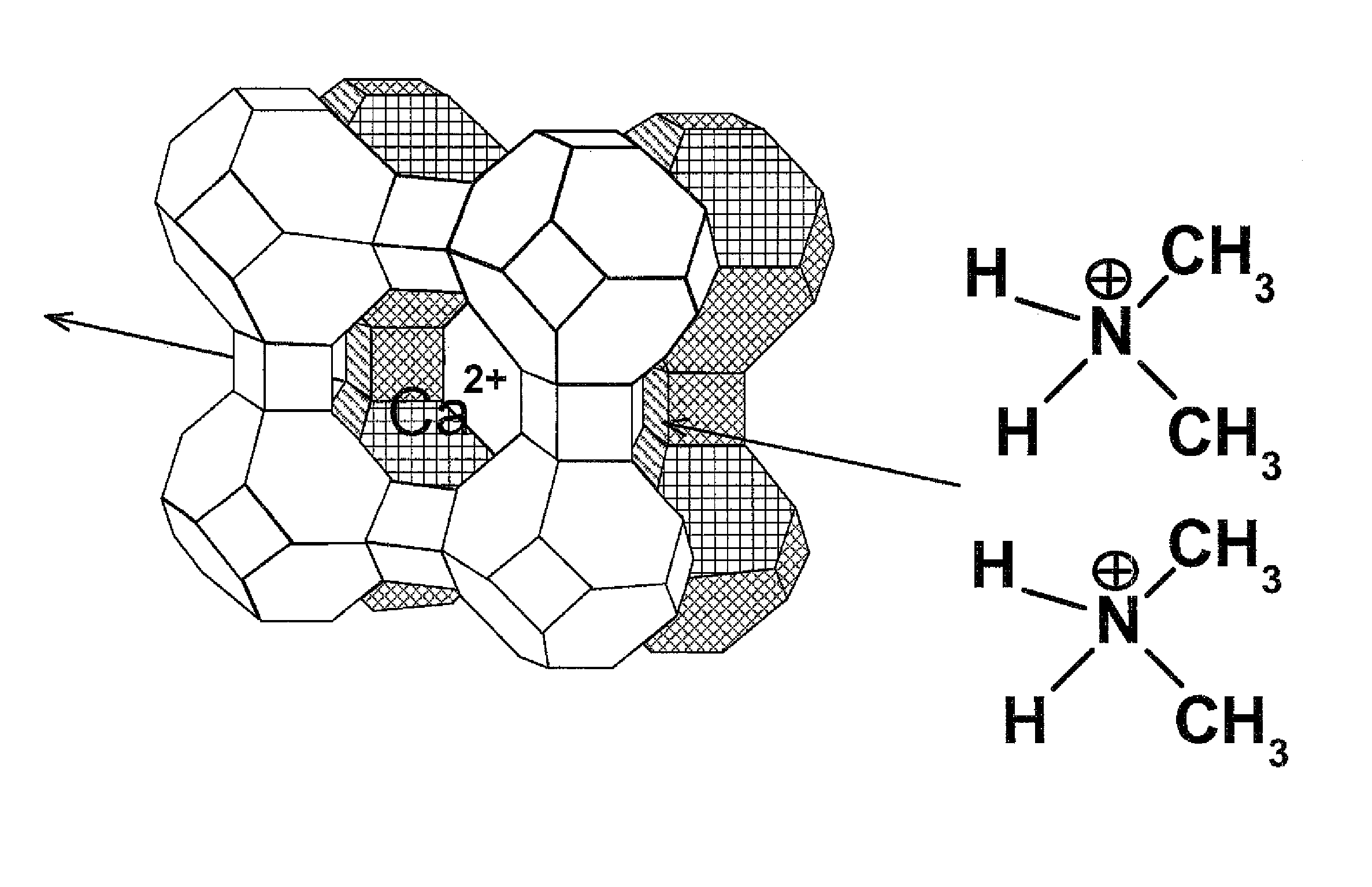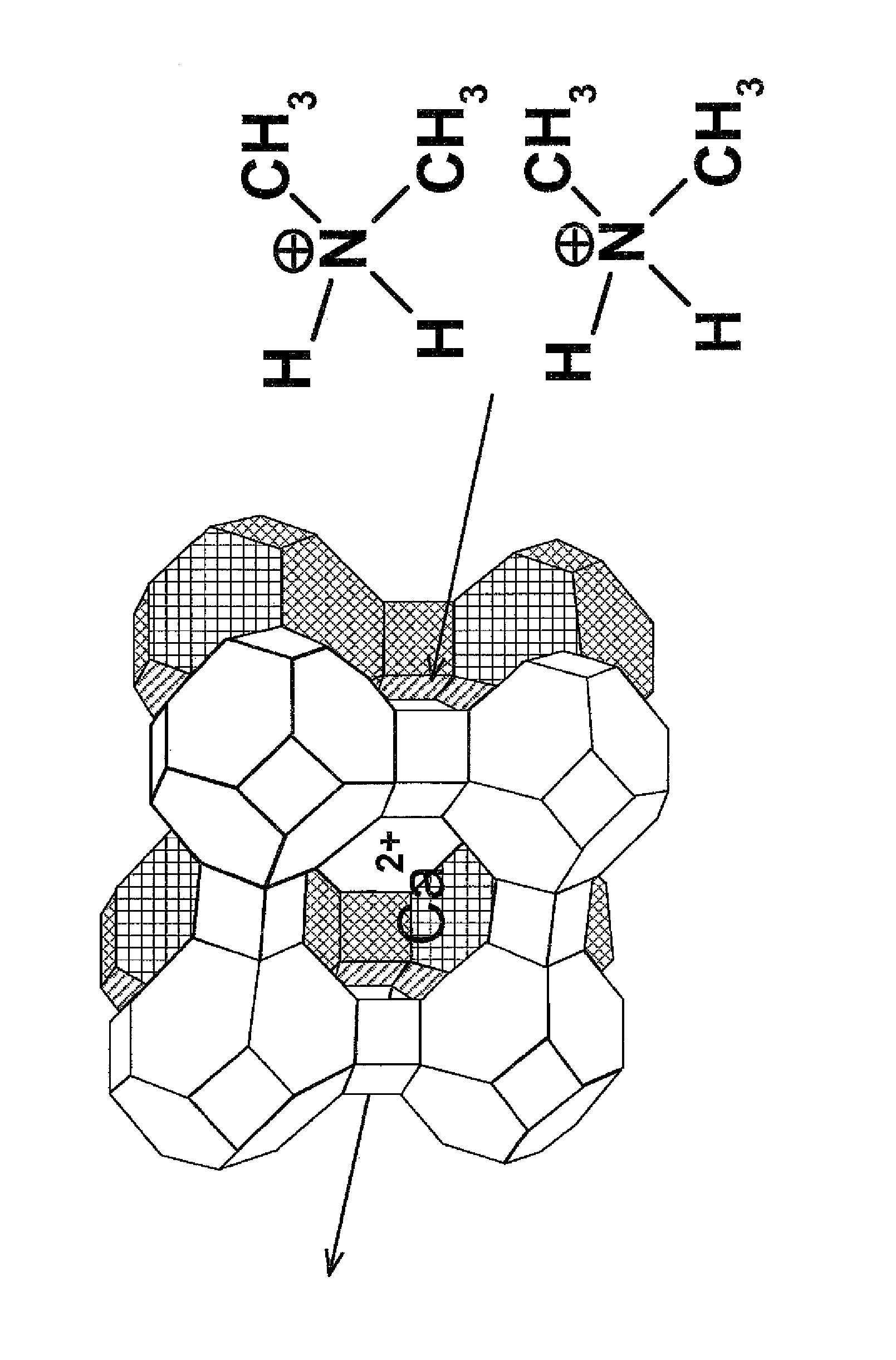Method for the reduction of the concentration of amines and salts thereof
a technology of amines and salts, applied in the direction of catalyst activation/preparation, water/sewage treatment by ion exchange, packaged goods, etc., can solve the problems of increasing the amount of amines, unable to be useful or sensible, and unable to be classified into harmful substances, so as to achieve the effect of effective reduction of the concentration of amines
- Summary
- Abstract
- Description
- Claims
- Application Information
AI Technical Summary
Benefits of technology
Problems solved by technology
Method used
Image
Examples
example 1
[0053]62.9 mg 2-(4′-hydroxyphenyl)-ethylamine-hydrochloride are dissolved to 50 ml in distilled water. 0.5 ml of this solution is diluted with water such that the concentration of 2-(4′-hydroxyphenyl)-ethylammonium is 40 mg / l. This solution is mixed with 500 mg clinoptilolite and stirred at 20° C. for 3.5 hours. After centrifugation of the reaction solution and clear filtration of the supernatant the concentration of the 2-(4′-hydroxyphenyl)-ethylammonium is determined. Result: The concentration of 2-(4′-hydroxyphenyl)-ethylammonium was lowered by 35.2 percent.
example 2
[0054]62.9 mg 2-(4′-hydroxyphenyl)-ethylamine-hydrochloride are dissolved to 50 ml in distilled water. 0.5 ml of this solution is diluted with water such that the concentration of 2-(4′-hydroxyphenyl)-ethylammonium is 40 mg / l. This solution is mixed with 50 mg clinoptilolite and stirred at 20° C. for 7 hours. After centrifugation of the reaction solution and clear filtration of the supernatant the concentration of the 2-(4′-hydroxyphenyl)-ethylammonium is determined. From this the reduction of the 2-(4′-Hydroxyphenyl)-ethylammonium concentration is determined. Result: The concentration of 2-(4′-hydroxyphenyl)-ethylammonium was lowered by 13.2 percent.
example 3
[0055]71.0 mg of 2-(4′-hydroxyphenyl)-ethylamine-hydrochloride are dissolved to 50 ml in distilled water. 0.5 ml of this solution is diluted with water such that the concentration of 2-(4′-hydroxyphenyl)-ethylammonium is 40 mg / l. This solution is mixed with 100 mg clinoptilolite material with a content of 44 percent and stirred at 37° C. for 3.5 hours. After centrifugation of the reaction solution and clear filtration of the supernatant the lowering of concentration of 2-(4′-hydroxyphenyl)-ethylammonium is determined. Result: the concentration of 2-(4′-hydroxyphenyl)-ethylammonium was lowered by 11.8 percent.
PUM
| Property | Measurement | Unit |
|---|---|---|
| specific surface area | aaaaa | aaaaa |
| specific surface area | aaaaa | aaaaa |
| zeta potentials | aaaaa | aaaaa |
Abstract
Description
Claims
Application Information
 Login to View More
Login to View More - R&D
- Intellectual Property
- Life Sciences
- Materials
- Tech Scout
- Unparalleled Data Quality
- Higher Quality Content
- 60% Fewer Hallucinations
Browse by: Latest US Patents, China's latest patents, Technical Efficacy Thesaurus, Application Domain, Technology Topic, Popular Technical Reports.
© 2025 PatSnap. All rights reserved.Legal|Privacy policy|Modern Slavery Act Transparency Statement|Sitemap|About US| Contact US: help@patsnap.com



